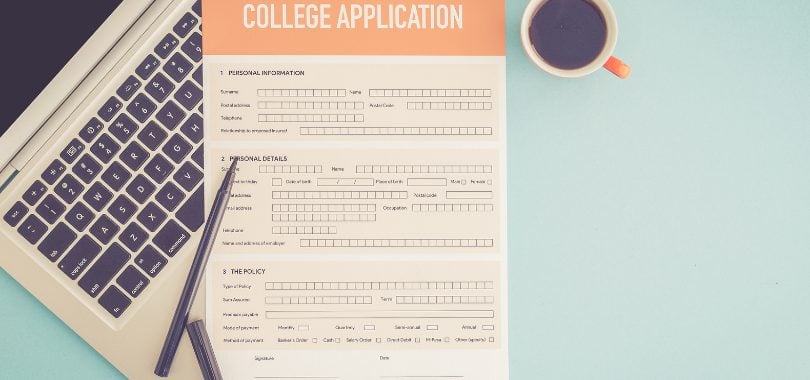- The processing and disbursement times are different for federal and private student loans.
- It takes around 1 to 3 weeks to get a federal student loan.
- It takes around 2 to 10 weeks to get a private student loan.
How long does it take to get a student loan? That’s a question on all students’ minds as they fill out their loan applications. You may stress over the timeline because you know you need the funds to cover your college-related costs.
Most colleges charge late fees if the tuition is not paid within a certain time after the deadline, and some may even cancel a student’s registration after a certain time has lapsed. To prevent this from happening, it’s important to understand how long it takes to get a student loan so you make sure to apply on time.
Approximately How Long Do Student Loans Take To Process?
It takes anywhere from 1 week to over a month to receive federal student loan funds. The time it takes to get a private student loan varies widely among lenders but generally, it takes about 2 weeks to 10 weeks.
The reason behind the long timeline is that there are several behind-the-scene formalities involved with processing any type of loan. And the reason behind the different timelines is that the federal government has a different loan process from that of private lenders.
The processing time also varies depending on where the funds are sent. Some funds are sent directly to the student’s account, while others are transferred to the school.
So how long does it take to get a student loan? Understanding the federal and private student loan processes will help you get a better idea of how long it could take for you to get the funds.
How Long Does It Take To Get A Federal Student Loan Processed?
Federal student loans are funded by the federal government. To get federal student loans, you must first file the Free Application For Federal Student Aid or FAFSA. Filing the FAFSA gives you access to different types of financial aid including merit-based scholarships, need-based grants, work-study, federal student loans, and institutional aid.
Step 1 of the federal student loan process: Create FSA ID.
The first step toward filing the FAFSA is to create an FSA ID. You can then use your login details to access the FAFSA application form. To complete the FAFSA, you will need to fill in your personal details, dependency status, and financial information.
Before you start filling out the form, be sure to read through the FAFSA completion guidelines carefully to determine whether you’re considered a dependent or independent student. It’s equally important to understand who counts as your parents for the FAFSA.
If you are filing the FAFSA as a dependent student, you will also need to provide detailed information about:
- Your family’s income, assets, and estimated net worth
- Number of people in your household
- Number of people in the household who are attending school
You can submit the FAFSA online or by mail.
Step 2 of the federal student loan process: Fill out the application.
After you fill out the application and submit it, the federal government will calculate your aid eligibility. This is based on the financial information provided on your application. Every student is eligible for a different amount of financial aid depending on their personal situation and financial circumstances.
The Department of Education takes 3-5 days to process applications that are submitted online and about 3 weeks to process paper applications that are sent by mail.
Step 3 of the federal student loan process: SAR
After your application is processed, you will receive a Student Aid Report or SAR. This report includes a detailed breakdown of your financial aid package. If you agree with the amount and terms of the loan, you will need to sign a Master Promissory Note.
The Master Promissory Note is a legally binding document. In signing this note, you acknowledge that you know you’re responsible for repaying any federal student loans you’ve taken. Federal student loans are disbursed only after you sign this Master Promissory Note. To receive the funds on time, make sure you sign the note and send it as soon as possible.
You will also need to complete entrance counseling before you can receive any federal financial aid. This takes about thirty minutes and can be completed online.
Step 4 of the federal student loan process: Financial aid packages are delivered
In the final step of the federal financial aid process, a copy of your FAFSA is sent to all the colleges that you’ve applied to. The schools that accept your application will send you a personalized financial aid package along with your offer of admission. The financial aid package is different for every student. Your package will be calculated based on the information you provided on the FAFSA.
In most cases, you can expect federal student loan funds to disburse within 10 days before the 1st day that classes commence. If you’re a first-year student and a first-time borrower, there may be a 30-day delay in allocating the funds. In this case, the funds may be disbursed 30 days after the 1st day of the payment period.
You do not receive federal funds in your personal account. The school applies your loan funds first toward tuition, fees, room, and board. Any funds that are remaining will then be transferred to your account. These funds can only be used to pay for education-related expenses.
How to check the status of your federal student loans
You can check the status of your loans by logging into your FAFSA account. You’ll find your loan status on the “My FAFSA” page.
Another option is to call the Federal Student Aid Information Center at 1-800-4-FED-AID (1-800-433-3243).
Your school’s financial aid office will help you with information on when your funds will be disbursed.
Three important things to keep in mind regarding federal financial aid:
- The FAFSA is only valid for one academic year. You must fill out this application every academic year before the submission deadline to receive federal financial aid during subsequent years.
- Your financial aid eligibility may change every year depending on changes in your family’s finances. This means the federal financial aid that you receive will be different every year. Regardless of eligibility, if you don’t file the FAFSA, you won’t receive any aid for that year.
- The FAFSA typically opens on October 1 for the following academic year and the submission deadline is June 30 of the following year. Filing your application closer to October 1 will ensure you get your federal financial aid on time.
How Long Does It Take To Get A Private Student Loan Processed?
The private student loan process is very different from the federal student loan process. Private lenders fund these loans. Every lender sets their own eligibility requirements, terms and conditions, interest rates, and repayment schedule. Every lender also has their own loan processing procedure and timeline.
Step 1 of the private student loan process: Research lenders
Unlike federal student loans, there’s no common loan application form for private students nor is there a deadline to apply. Every lender operates differently, which is why it is so important to do your research when taking private student loans.
Ideally, you want to look for a lender with the lowest interest rates and the most flexible repayment terms. If you need the funds fast, you may need to ask prospective lenders to give you an estimated timeline of how long it will take for you to get the student loan.
Step 2 of the private student loan process: Apply
After you’ve researched your options and identified the best lender for you, you’ll need to submit a loan application. Most lenders will ask you to provide details about:
- Your name and date of birth
- Social Security number
- Contact information
- School name
- The estimated cost of attendance
- Expected graduation date
- Requested loan amount
- Total household income
Step 3 of the private student loan process: Lenders review application
Upon receiving your application, the lender will review the details you’ve provided to determine your eligibility. Processing your loan application could take as little as a few minutes to several business days. However, depending on the information you’ve provided, some lenders may request additional information. This could prolong the process by a few more days.
Step 4 of the private student loan process: Approval and documentation
If your application is approved, the lender will send you a formal agreement along with supporting paperwork that you’ll need to sign. You can send the signed documents either online or by mail.
The next step after accepting a private student loan is school certification if you’re taking a school-certified loan. Your lender will work with your school to confirm the cost of attendance and other enrollment details. This process could take anywhere from 2 to 10 days. You don’t have to do anything unless the school or lender asks for more information or documentation. After the certification process is complete, the lender transfers the funds to your school to be applied to your cost of attendance.
If you are taking a direct-to-consumer or uncertified loan, the funds will be disbursed directly into your bank account.
Why private student loans should be your last resort
Although private student loans process faster, in most cases they should be your last resort. These loans may have higher interest rates and more rigid repayment terms. As a rule, exhaust your federal financial aid options before considering applying for private student loans.
It’s relatively more difficult to get private student loans than it is to get federal student loans. Private lenders usually approve loan applications based on the applicant’s credit score and other factors. A high credit score may increase the likelihood of being approved for the loan.
As a student, however, you likely wouldn’t have had any opportunity to build your credit history making loan approval for a private student loan more difficult. One way to get around this obstacle is by applying with a creditworthy cosigner. This could be a family member or friend who meets the lender’s credit requirements.
When a person cosigns your loan, they are sharing the responsibility of the loan with you. This can put them at risk of damaging their credit if they default on their loan repayments.
How to check the status of your private student loan
The process of checking the status of private student loans varies from one lender to another. In most cases, you should be able to log into your online account and check the progress. If that’s not an option, you can phone the lender and ask or send them an email and ask. If you’re taking a school-certified private loan, you’ll need to check with your school’s financial aid office to confirm that they’ve received the loan funds from the lender.
3 Factors That Can Affect How Long It Takes To Get A Student Loan
Some things can delay how long it takes to process student loans.
1- Incomplete or inaccurate loan application: You will need to provide your personal and financial information, whether you’re applying for private or federal student loans. You will also need to submit documentation supporting certain financial details.
Make sure to fill in all the information correctly and submit all the documentation listed in the application form. If your application is incomplete or contains errors, the lender will halt the process and get back to you for clarification. They will only continue processing your loan after you’ve corrected the errors or submitted the required documentation.
2 – Time of the year you apply for a student loan: January and August are peak times for processing student loans. This is also the time that all schools are busy certifying loans for all students before the academic term begins. If you’ve submitted your loan application around this time, expect it to take longer to receive the funds.
3 – Using a cosigner: If you’re taking a private student loan, you may need to apply with a cosigner. In this case, you’ll need to enter their private and financial details in the application. You also have to submit their financial documentation. Any delay in getting all the paperwork together can delay how long it takes to get the student loan.
How To Make Sure You Get A Student Loan On Time
To ensure that you receive the funds on time, it’s advisable to always apply for student loans as early as possible.
Start exploring your options at least a few months before you need the funds.
Shortlist the top three or top five lenders offering the lowest interest rates and best terms and conditions. Make a note of what information and supporting documentation each lender requires and keep it all ready. Find out how long it takes to get a student loan from each lender.
Make a note of the deadline for making payments. Work backward to figure out when you need to submit the loan application. Set a reminder and submit your loan application on that date. This ensures that you receive the funds in time to pay your tuition even if the process is delayed.
Important Things to Keep in Mind When Applying For Student Loans
Many students, despite the number of scholarships and grants they receive, still need to take out student loans. If your college isn’t offering you enough federal student loans, here are some things to keep in mind with private loans:
- Always exhaust your federal funding options first before applying for private student loans. Federal student loans have lower interest rates and a range of flexible repayment plans. They also have several protections including forgiveness programs.
- When researching private lenders, don’t feel pressured to commit to any one private lender. Shop around and decide which loan and interest rates are best for you.






